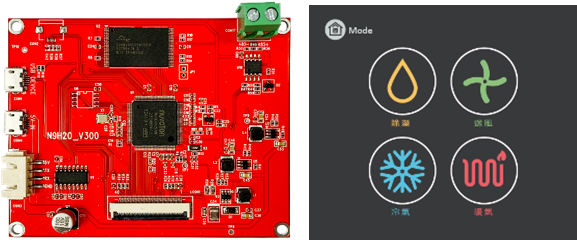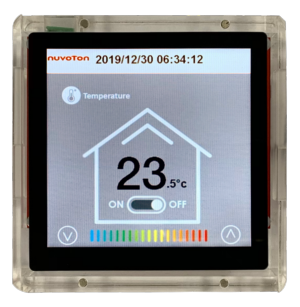Traditional thermostats use monochrome LED or LCD solutions. In the past, the price of color LCD was out of reach. However, as demand increases and production expands, the price gradually becomes more affordable, which in turn makes the display screens of household appliances gradually move towards color LCD. Through the color LCD, the status display of temperature, weather and humidity can be made more humane, and more interactive effects can be made, including time switches, settings, etc., which can have more amazing performances.
Specification requirements for color thermostats:
Nuvoton Technology's newly launched color thermostat box reference design provides a complete solution, starting from the hardware design. It uses the graphics control series product N9H20 microprocessor and built-in 32 MB SDRAM memory, which reduces the hardware design effort. Difficulty, built-in large-capacity memory brings three major benefits:
First, the circuit design is simple, the PCB design is simple, and the PCB area is reduced.
Second, it reduces external high-speed signals, greatly reduces electromagnetic interference, and easily passes safety regulations (FCC/CE/BSMI/CCC) tests.
Third, using LQFP packaging, it is easy to debug and maintain.
This solution provides a complete hardware design including circuit design, RS485 circuit, and PCB layout. In terms of software design, a complete graphic of the thermostat is provided, including the startup screen, three-page sliding mode switching, temperature display, temperature control, perpetual calendar, backlight control, and RS485 control. The entire software uses open software, allowing users to change processes and pictures according to their own plans, and users can directly download and use related pictures.


Complete set of reference design specifications
| CPU | N9H20K51N: Arm926EJ-S 200MHz, built-in 32 MB SDRAM |
| LCD | 4” 480x480 18bit, capacitive Touch |
| Storage | 1 Gb NAND Flash |
| Input /output | RS485 Port x 1, RS232 x1 |
| Power | USB 5V In ( 340 mA ) |
related resources

Blockdiagram
All reference designs on this site are sourced from major semiconductor manufacturers or collected online for learning and research. The copyright belongs to the semiconductor manufacturer or the original author. If you believe that the reference design of this site infringes upon your relevant rights and interests, please send us a rights notice. As a neutral platform service provider, we will take measures to delete the relevant content in accordance with relevant laws after receiving the relevant notice from the rights holder. Please send relevant notifications to email: bbs_service@eeworld.com.cn.
It is your responsibility to test the circuit yourself and determine its suitability for you. EEWorld will not be liable for direct, indirect, special, incidental, consequential or punitive damages arising from any cause or anything connected to any reference design used.
Supported by EEWorld Datasheet